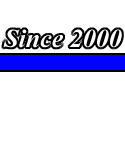

 |
|
|
Main
Video Games Interactive
Forums Hosted Sites
|
By
Cloudmann Introduction: In 1984, when Jack Tramiel (papa Commodore) was ousted from the powerhouse computer company he founded in the '50s, designs for what would become the Commodore Amiga were already underway, hopefully to make Commodoreís 16-bit existence the tour de force that their 8-bit showing was. Before the beast that was the Amiga 500 came to be, the Amiga 1000 existed; very similar, but slightly less powerful. Tramiel, understandably bitter at being removed from his creation, looked to squash his former company. He became head of Atari Corporation (still reeling from the videogame crash of 1983) and set out to use his considerable inside information on the Amiga to make an Atari home PC that would destroy Commodore. The results were that Atari steered completely away from console systems and that the Atari ST computers were remarkably similar to the Amiga home computers. The CPU was identical, the GPU was nearly so (though the Amigaís was slightly more powerful and easier to use), and both systems used similar FM synthesis chips (though the Amigaís outclassed the Atariís). The Amiga ruled in the Americas and Asia, the ST dominated in Europe (something like 81 percent of its sales, at one point, were in the UK). Given their co-dominance of the 16-bit PC gaming market and their similarities, many software houses developed the game for one system (usually the lesser-powered Atari) and just ported it over to the other. These games ended up being nearly identical. This is the case with the entire Double Dragon series. With the exception of sound, the ports are nearly indistinguishable.
Graphics: C+ Neither the ST or the Amiga slouched in this regard. Both were capable of (at the time) arcade-perfect ports. The problem was extracting the graphics data from the arcade. Earlier on (until right after the first DD was ported), the graphics were manually replicated. As with the Amiga port, the graphics are certainly colorful, the backgrounds look good, scrolling is smooth, and an appropriate number of frame animations are present. So why no A? The graphics on this port look just as goofy as on the Amiga. This makes sense, as all three Double Dragon titles on the Amiga are direct ports of the ST titles. This was coded using a low resolution mode on the ST, which unfortunately migrated to the Amiga. Why a higher grade than the Amiga? This makes more sense on this system than on the Amiga, since graphics coding was a bit more complex on this system. All of that said though, even recreating the graphics manually should have produced better results than this. Decent results, but a bad effort that didnít live up to the systemsí potentials.
Sound: D+ Again, this was coded for the ST, then ported to the Amiga. While not as capable as the Amiga in the sound department, the ST was one hell of a capable sound machine, even without using its MIDI capabilities. There is no in-game music. There is virtually no in-game sound (save a generic attack ďsplatĒ noise and another generic ďsquooshĒ thud noise). Thatís it. The Amigaís horrible five second title loop came directly from here as well (poorly executed, by the way). Really not impressive at all.
Enemies: C- One Abobo/Bolo sprite set, one Linda sprite set, one Willy sprite set, and one Billy, Jimmy, Roper, Williams, Jeff and everybody else sprite set. Thatís it. Pallete swaps a-plenty here folks. Thatís crappy given this systemís 512K memory. Enemy AI sucks, and theyíre easy to defeat (almost too easy). The only time this is different (and when I saw slowdown) was at the level 2 elevator where youíre inundated by wave after wave of enemies. Really, that part is the most difficult in the game, and itís still pretty easy. Hold down fire after you situate your player strategically, and you may as well be invincible. And why is it that every home PC conversion of Double Dragon removed Aboboís throw? Poopy. Weapons: B- Well, theyíre all here. They all work. But the whip and bat pretty much make you an unstoppable force. Really, just time your swings and nobody can touch you, with or without weapons, jumping attacks, or whatever. The only exceptions are the knife, throwable objects, and Willyís gun. Your bat even outranges an enemy holding a bat. Itís a bit of a shame that this removes so much of the challenge, but the developers did include every weapon. Decent effort.
Controls and Moves: B- All of the moves are here, but the one-button controls take away from the fluidity of motion. It makes certain things (like throws) difficult to execute and others (like the elbow smash) awkward to use in the middle of a fight. This changes your strategy a bit, and that changes the feel of the game mechanic. Not bad, but not great.
Modes: A- One player, two player, and nothing else. Not a bad thing, but a vs. mode would be nice. Decent enough.
Conclusion/Overall: C+ The biggest thing thatís wrong with this port is that itís such a huge disappointment. The Amiga and ST at this point had well established themselves as gaming powerhouses. Other game houses had already exploited these systems to great effect and put out some damn decent games that played great and put out an audiovisual showstopper performance. That this major franchise didnít get the same treatment is a damn shame. The game plays well enough, but itís too easy. It looks decent enough, but itís below standards. It soundsÖ like crap. This isnít how you wow a gaming audience thatís paying for your paychecks by purchasing your products. In the end, this is a half-assed effort that turned out a little better than it should have, given the level of effort, but much worse than it had potential to.
|
||||||||||||